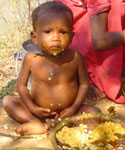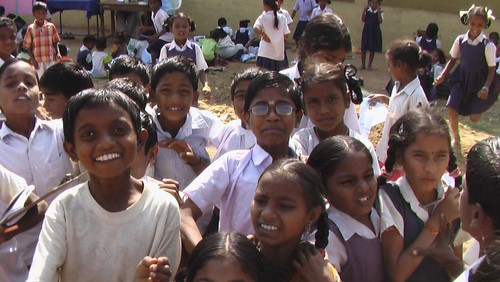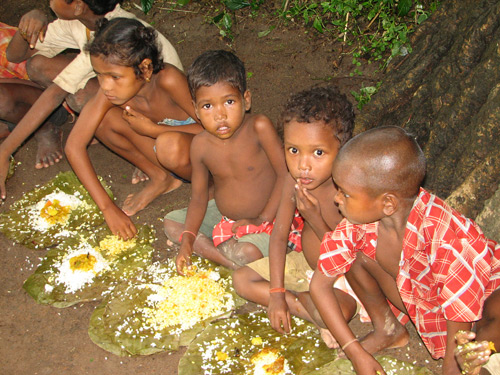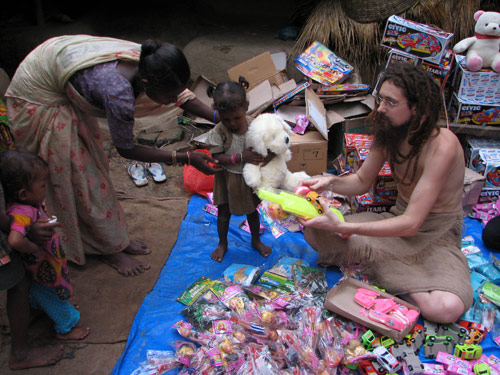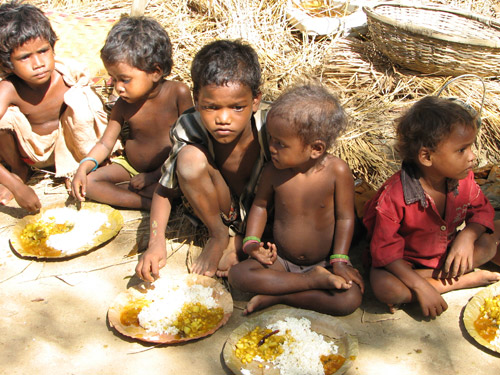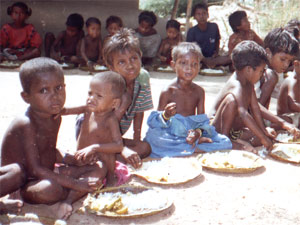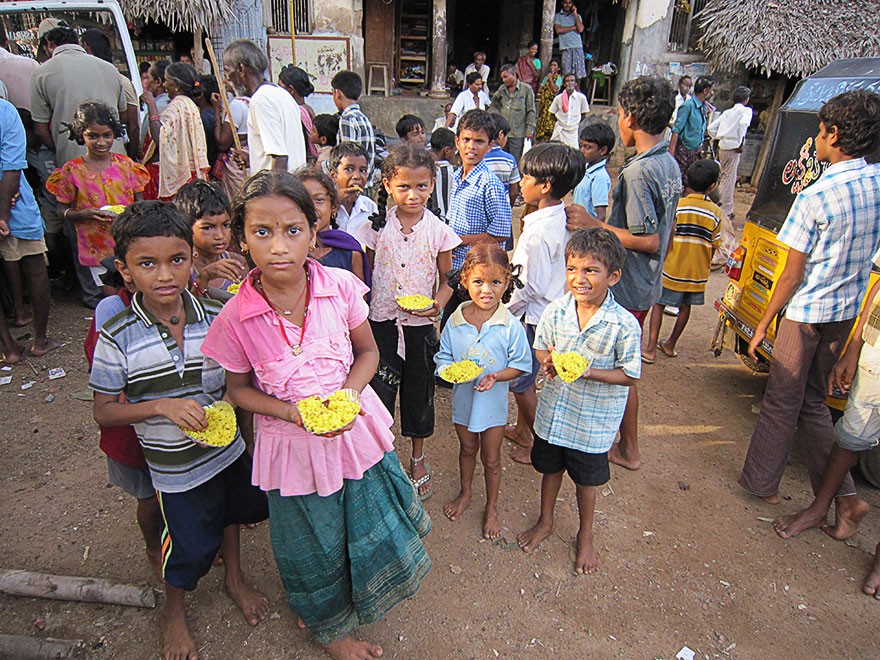A recent Unicef 2005 report on the state of the world’s children under the title “Childhood Under Threat” says that over one billion children, half of the world’s population of children, have been denied their childhood. Poverty and AIDS have prevented the world from meeting the goals on their improvement. Their right to a healthy life as adopted in the 1989 convention is often endangered by the failure of governments to carry out human rights and economic reforms. It is reported that some 640 million children lack adequate shelter; 400 million have no access to safe drinking water; 270 million lack health care amenities and 140 million — mostly girls — have never been to school. It was earlier reported that more than 150 million children are malnourished worldwide.
The Unicef 2005 report also says millions of Indian children are equally deprived of their rights to survival, health, nutrition, education and safe drinking water. It is reported that 63 per cent of them go to bed hungry and 53 per cent suffer from chronic malnutrition.
Drinking water
The report says that 147 million children live in kuchcha houses, 77 million do not use drinking water from a tap, 85 million are not being immunised, 27 million are severely underweight and 33 million have never been to school. It was earlier reported that the country continues to have the highest number of malnourished children under five in the world having one-third of the world’s malnourished children. And every third new-born child in India is under-weight having the risk of impaired health and brain development.
The Supreme Court had earlier held that children’s right to dignified existence must be protected. The court also said that the government should work out a welfare scheme for the children working in pathetic conditions in hazardous industries.
The Child Mortality Evaluation Committee recently reported that around 160,000 infants died every year in Maharashtra owing to malnutrition particularly in the rural, tribal and urban slum areas. It criticised the indifferent attitude of the state government. Other states like Orissa, Gujarat, Rajasthan and Andhra Pradesh faced a similar situation where a number of starvation deaths among children took place. Malnutrition reduces life expectancy and leads to low productivity adversely affecting the country’s economic development.
India has the largest number of illiterates in the world, two-thirds of whom are girls. There is no doubt that the overall literacy rate in India has increased to 65.4 per cent from 52.2 per cent in 1991. Even then, 72 million children in India between five and 14 years do not have access to basic education. Their number was 105.7 million in 1991. UP, Bihar, MP, Orissa and Rajasthan have a higher proportion of out-of-school children.
There are over 60 million more illiterate persons in India than they were in 1961. The goal of universal primary education by the turn of the century was placed on the top of the global agenda in the Delhi Declaration at the Education For All summit of nine countries, but there have been little improvement in the situation.
Diseases
Children in developing countries are the worst victims of ill-health owing to infectious diseases. A UN report on the status of children has said that 10 years after the world summit on children in 1990, more than 10 million children die each year from preventable diseases. Out of five million children who die each year in South Asia, about three million die owing to malnutrition. In South Africa, four children every hour or 96 children every day die of malnutrition. Over eight million children in the world die every year from the five killer diseases — pneumonia, diarrhoea, measles, tetanus and whooping cough. Unicef has reported that despite the immunisation programme against these diseases, 2.4 million Indian children perished. Rajasthan, UP and MP account for more than 50 per cent of infant deaths.
The rate of infant mortality (IMR) reflects on the general health and economic conditions of a country. It represents the number of babies who die before the age of one out of every 1,000 live births. In developed countries, it is as low as 6.7 in Sweden. Unicef’s report ranks India 49th in child mortality. The infant moratlity rate in India has come down to 68 from 129 in 1971 whereas the country’s under five mortality rate is placed at 93 per 1,000 live births. Kerala has the lowest IMR of 17 and Orissa has the highest at 114. Poverty, unhygienic environment and malnutrition among women in the reproductive age group are the main contributing factors for India’s high rate.
About 500 million children in Africa, South East Asia, West Asia and Latin America do not get enough food owing to poverty, and they go to bed hungry every day; 100 million live on the streets and a billion are illiterate, two-thirds being girls. Around 25 to 30 million children in India spend their lives on the streets in a poisonous environment.
More than 155 million children under five in the developing countries are adversely affected by poverty. Forty million live in urban and 115 million in rural areas. The situation in Latin America is the worst. There are roughly 40 million children living on streets in Latin America; 25 to 30 million are in Asia and 10 million in Africa.
Street children suffer because of neglect. They work in a polluted environment and are often abused and exploited. They suffer from ill-health and become victims of infectious diseases. The number of AIDS cases among street children is the largest in Latin America. Their mental development is also retarded.
The Unicef report says that 26 million children in the world suffer from brain damage due to iodine deficiency. In India, there are 6.6 million children having a damaged brain from iodine deficiency. The National Family Health Survey has revealed that over 70 per cent of the children in many states suffer from iron deficiency.
Millions of children in developing countries are crippled. Nearly 40 per cent of children under five suffer from protein-calorie malnutrition. And about five lakh children in developing countries lose their sight every year owing to malnutrition and ignorance. In India, 1.5 million children suffer from Vitamin A deficiency against 40 million the world over. Children of poor socio-economic groups mostly suffer from this affliction, and the incidence is higher in remote tribal and rural areas and urban slums. Would the introduction of genetically modified Golden Rice help to prevent blindness?
Girl child
A girl child is the worst victim as she is often neglected and is discriminated against because of the preference for a boy child. Many of them in the low social status group die of malnutrition while many suffer from infectious diseases. Child marriage is another social evil. Early marriage causes early child bearing, resulting in physical stress on the teenage mother and underweight babies. This in turn accounts for a high infant mortality rate. Children are considered an asset of a nation, and their welfare reflects the nation’s prosperity and economic development. The Comptroller and Auditor General of India has earlier brought out shortcomings in the working of the Integrated Child Development Scheme (ICDS). It says that the ICDS has done little to improve the health status of children. The Delhi High Court recently expressed surprise over utilising hardly 10 per cent of the funds provided under ICDS for the benefit of under-privileged children.
A national commission for children has now been set up. Alleviation of poverty, providing education facilities and control of infectious diseases must get priority as part of a global campaign.

